350 Search Results for aided language input
January 26, 2013
by Carole Zangari -
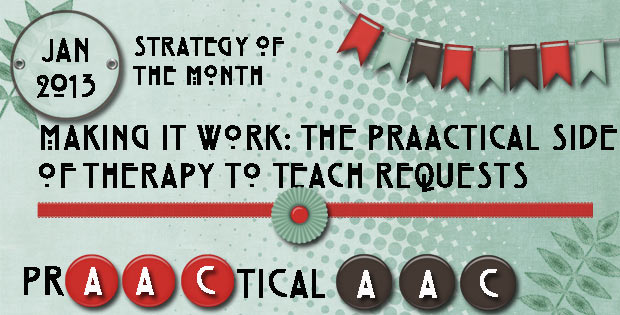
This month we’ve been talking about requesting and choicemaking, specifically how to teach it. Today, we’ll put it into a clinical context by talking about a hypothetical session that targets this skill, but also highlights other strategies. As you read about the materials, preparation, and script, look for how they incorporate strategies such as building specific communication opportunities {CO}, aided language input {ALI}, and expansions {EX}. The clinician also builds in repetition with variety so that there is sufficient opportunities for teaching and practice using multiple modes of communication. In this scenario, you’ll meet Jenna, a 5 year old with significant language difficulties secondary to Cri du Chat syndrome. Jenna’s communication system includes about a dozen manual signs (SIGN), 20-25 word approximations (SPEECH), a few gestures (GEST), some manual communication boards (COMM BD), and an iPad with a full-featured AAC app (iPAD). She also uses movement (MOVEMT), vocalizations (VOC), and... [Read More...]
January 19, 2013
by Robin Parker -
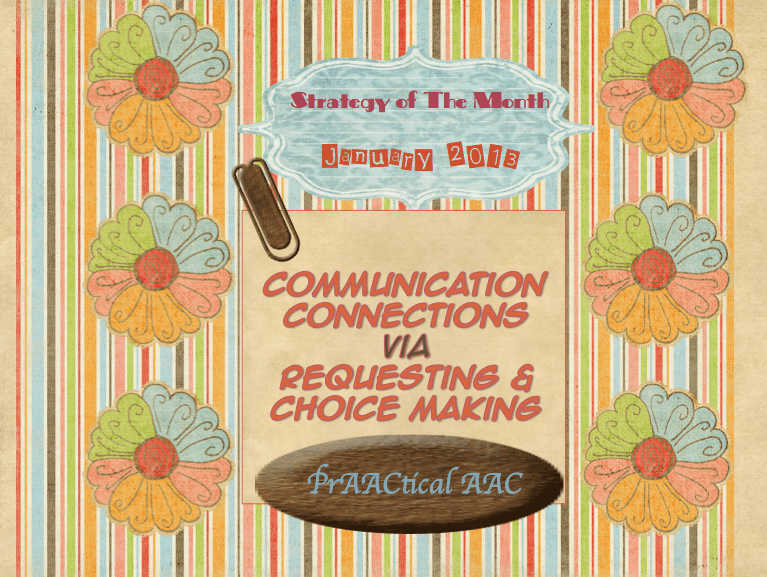
The January Strategy of the Month has focused on requesting and choice making. These are really fun goals to implement. They fall under the communication function that helps us meet our own needs (Behavioral Regulation). When we get what we want, there is a sense of control over the environment & we increase symbolic communication/language, and self-sufficiency. It’s all good. The assumption for all requests and choices is that the learner ‘likes’ what they have asked for. This is what makes the process so much fun, we get to do activities and have interactions that are positive and motivating. If only it was that easy… Sometimes it is not… But do not worry…there are plenty of solutions for common (and not so common) problems when teaching requesting and choice making. As always, set the stage for a positive TEACHING paradigm and then move to problem solving if necessary (and when it is... [Read More...]
January 17, 2013
by Carole Zangari -
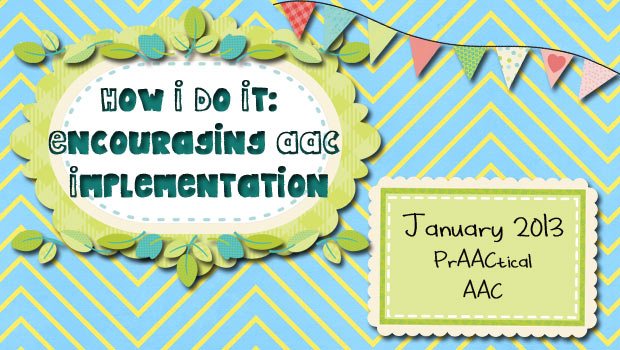
Nothing makes us happier than hearing AAC success stories. It’s thrilling to hear of folks who are using AAC tools and strategies to communicate effectively. We love hearing how their language develops and the positive changes that makes in their lives. It also makes us curious as to what made ‘this’ story a success story. One of our goals for the new year was to give PrAACtical AAC followers a look into the experiences of professionals outside their own communities. Last week, we introduced AACtual Therapy, a series of guest posts by SLPs who are willing to give us a peek into their AAC therapy sessions. Today, we introduce How I Do It, a series in which we invite SLPs to share how they tackle common issues, tasks, or problems. We’re excited to launch the series with a post from Lauren Enders, a clinician who supports the AAC community beyond... [Read More...]
January 12, 2013
by Carole Zangari -
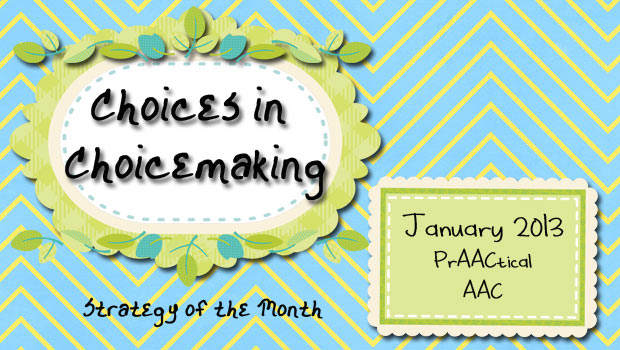
Choicemaking and requesting may be the most frequently targeted areas for beginning communicators who are starting out with their AAC systems. That makes sense for some learners because making choices is a very concrete focus for interaction and is loaded with motivational power. It seems pretty straightforward but, like anything else we do clinically, there are lots of decisions and choices to be made as we delve deeper into the process. How can we craft an AAC system that targets requesting for now, but also supports core language learning? For communicators who are at the earliest stages of making requests with AAC symbols, the strategy we discussed earlier this month or simple choice boards are a good starting point. But unless we quickly address where this is all going, the client will be strictly limited in their language learning. There are many ways to do this. Here is one approach.... [Read More...]
January 8, 2013
by Carole Zangari -
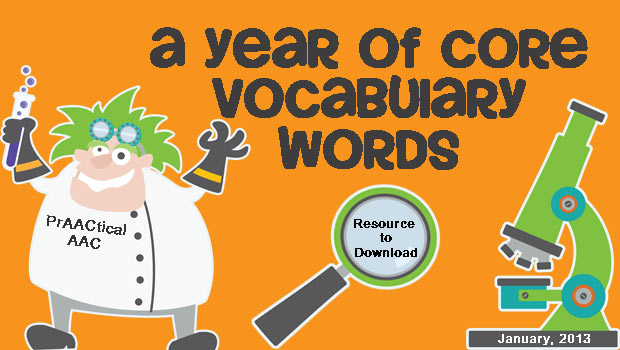
As clinicians, we frequently ask ourselves how we can help AAC learners become fluent with their core vocabulary words. A big part of the answer can be summed up in a word: Focus. The more we focus on those words, the more we can impact learning. There are lots of things competing for our attention, though, and sometimes we get distracted. Then it came to us: Visual supports work for SLP’s, too! When we saw another blogger post visual supports for sight word reading, we knew the idea had prAACtical application. So, we created 12 grids of core vocabulary words – one for each month of the year. Each grid has 12 cells labeled with core words. Plug in the AAC symbols that your client uses (e.g., PCS, SymbolStix, Unity, Pixons, etc), print, laminate, and keep them handy. Feel free to adapt the grids with other core words, if you... [Read More...]
January 5, 2013
by Carole Zangari -
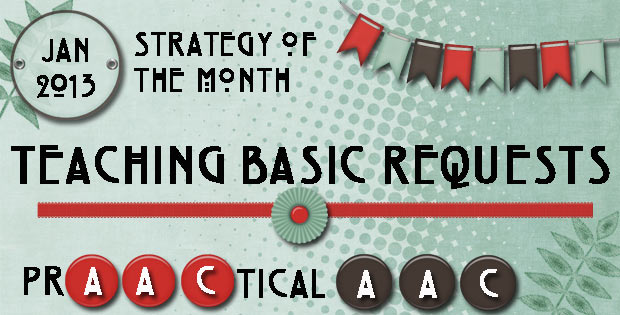
With the start of the new year, we thought it would be a good time to get back to basics. So this month, we’ll talk about the nitty gritty of teaching basic requesting to someone who is first learning to communicate using AAC. For learners who are not sending purposeful communication signals or those who seem unaware that communication involves interaction with another person, we think it makes sense to consider using the PECS curriculum. Why? Because the act of being assisted in physically giving a picture symbol to another person in exchange for a desired object can be an efficient way for someone to gain awareness of two critical principles. First, they learn that communication gives them the power to impact their environment. Secondly, the direct exchange highlights the fact that communication involves two people. As the PECS curriculum is already well established, its procedures will not be addressed... [Read More...]
January 4, 2013
by Carole Zangari -
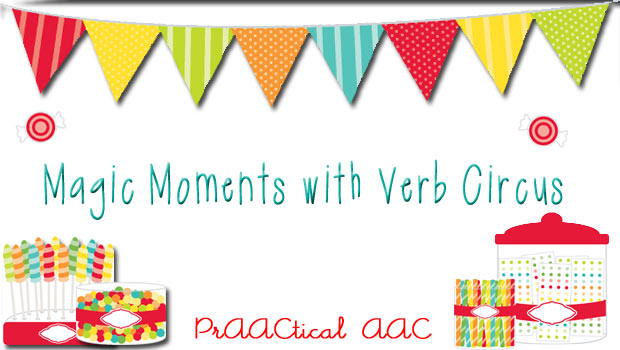
We are so excited to see the expanded web presence by SLPs who are blogging, running groups on Facebook, sharing resources on Pinterest, and maintaining online stores on TeachersPayTeachers. We’ve been thinking about how to connect with some of these creative professionals, both to extend our own professional learning networks and also to broaden the reach of our AAC message. Recently, when an opportunity to forge a few connections presented itself, we decided to collaborate with a few new SLP friends. Periodically, we will be featuring the materials of a fellow SLP who typically writes for colleagues serving primarily children with high incidence disabilities. They post great ideas and materials for students with articulation and phonological difficulties, fluency problems, and language disorders. We hope to put a prAACtical spin on their great ideas. In our inaugural post of this type, we hope to inspire some Magic Moments with fellow SLP Jocelyn... [Read More...]
December 28, 2012
by Carole Zangari -
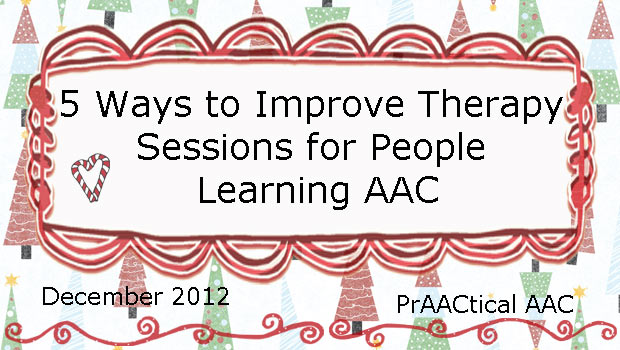
1. Start therapy as soon as you see the client: Savvy SLPs don’t waste a single second of therapy time. As soon as she saw 4 year-old Jonah in the waiting room, Chloe Clinician started sprinkling him with practice opportunities. They used vocalizations and gestures to greet other people. He ‘signed in’ at the front desk using a sheet she made up for Jonah to trace the first letter of his name. She blocked the door with her foot until he told her to ‘open’ and delayed his access to the beloved elevator button until he asked to go ‘up.’ By the time Jonah got to his therapy room, he had practiced skills in 5 different areas. This makes a clinical supervisor’s heart sing! 2. Speak AAC whenever you talk to the client. We’ve been shouting this from the virtual rooftops for quite awhile, but for those who missed it,... [Read More...]
December 22, 2012
by Robin Parker -
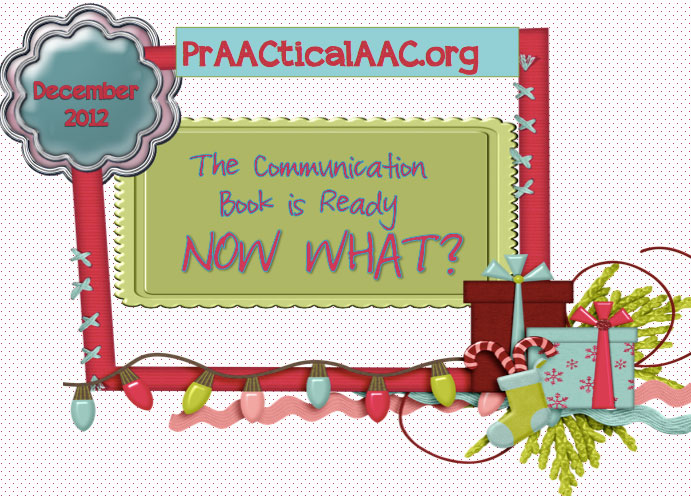
The Communication Book is Ready… Now What? The fun begins…. Yes, we really do think that TEACHING a learner to USE the communication book is FUN. We get to participate in lots of meaningful language experiences, we get to be creative, we get to watch language blossom, and we get to be surprised by the communication competence ALL of our learners show us after prAACtice, prAACtice, and for some more prAACtice . The best way to get started with communication book teaching is to begin by trying out different teaching tips, strategies, and resources and find out what works best. Each communication dyad (communicator & communication partner) is different so the combination of strategies that will work will vary but at the core of the teaching process, there should be fun, motivation, and of course progress. STRATEGIES and CONSIDERATIONS Aided Language Input (ALI)– We can not say enough about... [Read More...]
December 17, 2012
by Robin Parker -
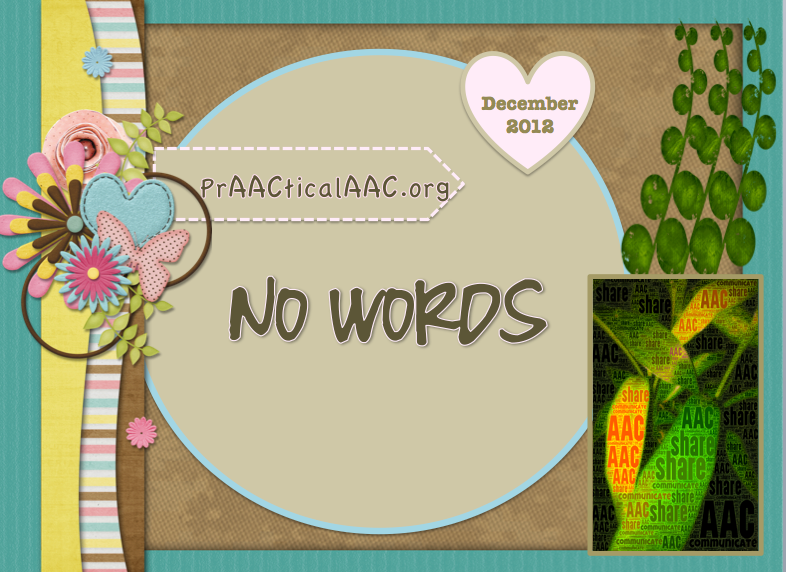
It’s been a long few days. Like everyone else, the Sandy Hook Elementary School Massacre has been on our minds, in our hearts, and in our dreams. We didn’t want to write about it. We didn’t even want to think about it. We have refrained from tweeting and ‘Facebooking’ about it. It’s all just too hard. Too sad. Too overwhelming. Too… Well, you know. But as the numbness started to wear off, we realized that we couldn’t avoid blogging about it. Why? Because it matters to people with AAC needs, too. And we, of all people, should understand that silence is not the answer. Unfortunately, we have been through other horrific world events and people who use AAC or communicate in other unconventional way have told us. “We’re hurting, too.” The SLP community has something to offer here and a responsibility to help where we can. As clinicians, we agonize. “What... [Read More...]









